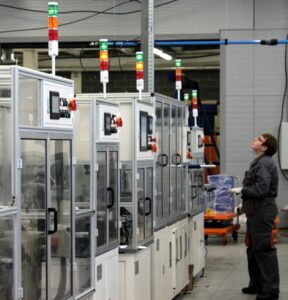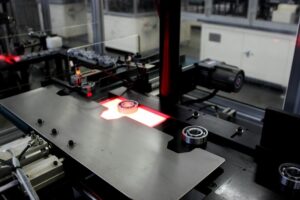Technical control is the most important part of the quality management system at a machine-building enterprise. The system of technical control (objects of technical control, control operations and their sequence, technical equipment, modes, methods, means of mechanization and automation of control operations) is an integral part of the production process.
Individual elements of the system are developed (determined) simultaneously with the development of production technology and are necessarily recorded in the relevant technological documentation. In the system of technological preparation of production, technical control is an integral component of the technological process of manufacturing and repairing a product and is developed in the form of a technical control process or a technical control operation.
In some industries, control costs exceed 50% of the product cost. In the metalworking industry, they account for 8–15% of production costs, with 90–95% of these costs related to the control of linear and angular dimensions. The time spent on developing control technology for a single part ranges, depending on its complexity, from 5–6 hours to several weeks. The time spent on inspecting this part ranges from 40 minutes to several hours.
For example, in the manufacture of a piston aircraft engine, 130,000 operations are performed, of which 50,000 are inspection and measurement operations. The labor intensity of controlling engine parts accounts for up to 35% of the labor intensity of their machining. For every thousand types of parts and assemblies, there are on average no fewer than 3,000 control operations.
Technical control must cover the entire technological process in order to prevent, with a given probability, the passage of defective blanks, parts, and assemblies into subsequent stages of production. In addition, technical control operations should provide information for regulating the technological process.

Fig. 1 – Automated control in the assembly line (bearing production)
To ensure high quality of the final product, its parameters must be constantly monitored. Laboratory or other forms of control of finished products will undoubtedly retain their importance in the future. However, this method has a major drawback—it is not operational. Control of finished products provides an assessment of events that have already occurred during the technological process, and it is impossible to make rapid adjustments to the process. Therefore, at modern enterprises, preference is given to methods of operational data acquisition directly during the technological process using measuring instruments and installations (Fig. 1).
For example, the operator monitors the entire process using a computer connected to measuring equipment built into the line (Fig. 2).

Fig. 2 – Measuring equipment integrated into the assembly line (automated control)
In addition, an enormous role in the adequate assessment of the quality of raw materials, components, or finished products is played by the scope of control (sampling), its frequency, the controlled parameters, and the methods and means of their measurement.
The production facilities of Baltic Bearing Company-Riga are equipped with modern, high-precision, and high-performance technological solutions that allow for systematic control of key bearing parameters and component parts. Machines and sensors performing control operations are built into the grinding and assembly lines and are an integral part of the technological process. Automation of control is a key element and a remarkable advantage of BBC-R bearing production.
R&D Director of
Baltic Bearing Company – Riga, PhD,
Nosenko